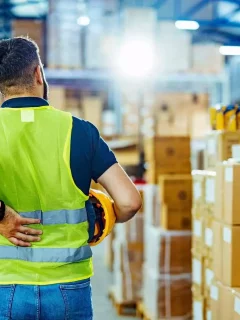Sustainable development represents a growth model that aims to meet the needs of the present without compromising the ability of future generationsto meet theirs. This concept is fundamental in modern logistics, where environmental and social sustainability becomes a primary objective. Sustainable logistics is a growing necessity to reduce the environmental impact of industrial and logistical activities, especially in the reduction of CO2 emissions.
Sustainable supply chain: beyond the reduction of CO2 emissions
Sustainable supply chain goes beyond simply reducing CO2 emissions. It is aboutintegrating sustainable practices at every stage of the supply chain:
- materials sourcing,
- production,
- distribution,
- consumption,
- final disposal of products.
This approach not only benefits the environment but also supports social responsibility, contributing to a greener future for future generations.
Green Supply Chain and Green Procurement
The practices of green supply chain refer, therefore, to theimplementation of sustainable policies at all stages of the production cycle, from manufacturing to distribution.
This approach focuses on reducing the environmental impact of logistics operations through the use of clean technologies, optimising transport routes, reducing waste and increasing energy efficiency. The main objectives include:
- the reduction of emissions of greenhouse gases
- the improvement of resource management
- support for acircular economy.
The green supply chain also involves the choice of sustainable materials for packaging and transport, and the adoption of renewable energy sources. These practices not only benefit the environment, but can also lead to long-term cost reductions and improve corporate image.
A key aspect of this strategy is green procurement, i.e. thepurchase of materials and services that are environmentally friendly. This involves choosing suppliers that adopt sustainable practices, favouring recyclable or reusable products and reducing waste .Through these methods, companies can contribute significantly to reducing CO2 emissions and promote greater environmental responsibility.
In the logistics sector, the transition to a sustainable supply chain requires an innovative approach and a careful analysis of best practices. Stakeholders are called upon to explore advanced solutions and detailed strategies to implement sustainability at every stage of the supply chain.
Let us remember that it is always the people who make the difference, which is why it is necessary to invest intraining and awareness-raising of staff and stakeholders. People need to be kept up-to-date on the latest trends and skills needed to manage a sustainable supply chain, promoting a sustainability-oriented corporate culture.
Upstream and downstream actions in sustainable logistics
In the context of sustainable logistics, it is crucial to consider both upstream and downstream actions in the supply chain. These terms describe the different steps in the logistics process and their relationship with the environment.
Upstream actions for integrated sustainability
Upstream actions concern all operations that precede theproduction of the product. This includes the selection ofraw materials, thechoice of suppliers, and theproduction itself .In sustainable logistics, effective upstream action means:
- Choosing suppliers that use sustainable practices and renewable resources.
- Adopting production processes that minimise environmental impact, such as the use of renewable energy and waste reduction.
- Consider environmental impact in the product designfavouring recyclable materials and low-impact production processes.
Downstream actions to reduce environmental impact
Downstream actions, on the other hand , includeproductdistribution, consumption, and disposal. In sustainable logistics, downstream actions focus on:
- L’optimisation of distribution routes to reduce CO2 emissions.
- The encouragement of recycling and reuse of end-of-life products.
- The implementation of return systems for recycling of products and packaging.
By incorporating sustainable strategies in both the upstream and downstream phases, companies can significantly reduce their overall environmental impact, contributing to the preservation of resources for future generations. This holistic view of the supply chain not only improves environmental sustainability but also enhances operational efficiency and corporate image.
Recycling and sustainability: the case of PET
PET (polyethylene terephthalate) isone of the most commonly used and recycled materials in the world. Its recycling is an excellent example of how logistics can contribute to sustainability. By recycling PET, waste and the use of natural resources are reduced and CO2 emissions are reduced, as the recycling process requires less energy than the production of new material.
Implementing effective recycling strategies is a key step towards greener logistics. Products such as adhesive tape made of 85% recycled PETare concrete examples of how PET recycling can be integrated into everyday products.
These tapes not only use recycled material, butalso maintain high performance, demonstrating that sustainability can go hand in hand with quality and efficiency. The use of such products in logistics and packaging is an important contribution to reducing the environmental footprint, promoting a circular economy and reducing dependence on non-renewable resources.
Innovative projects to save the environment
In addition to everyday sustainability practices, ambitious and innovative projects to save the environment are also essential. These can include the development of green technologies for transport and logistics, the use of renewable energy in logistics operations and collaboration with organisations dedicated to environmental sustainability. The sustainable supply chain is not just a utopia, but a reality in the making, with many companies already adopting these practices to reduce their environmental impact and contribute to a greener, more sustainable future.
By adopting green procurement, encouraging recycling, developing green logistics and launching innovative projects, the logistics sector can play a significant role in reducing CO2 emissions and promoting environmental and social sustainability.














